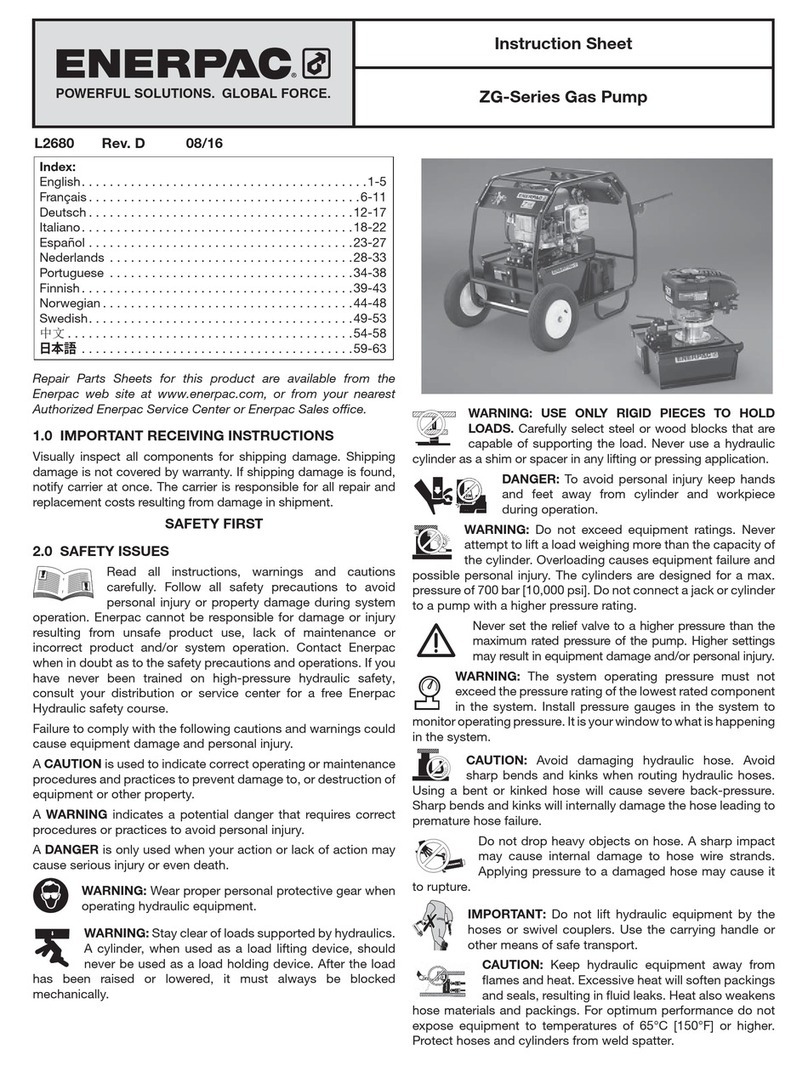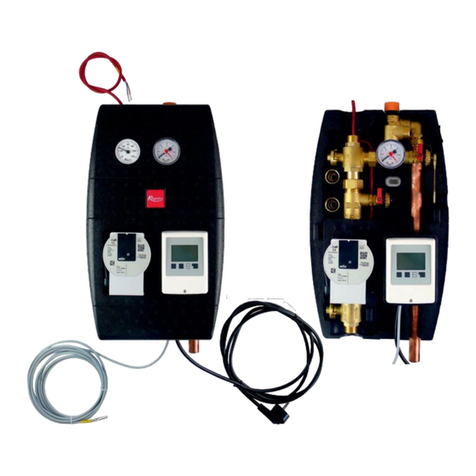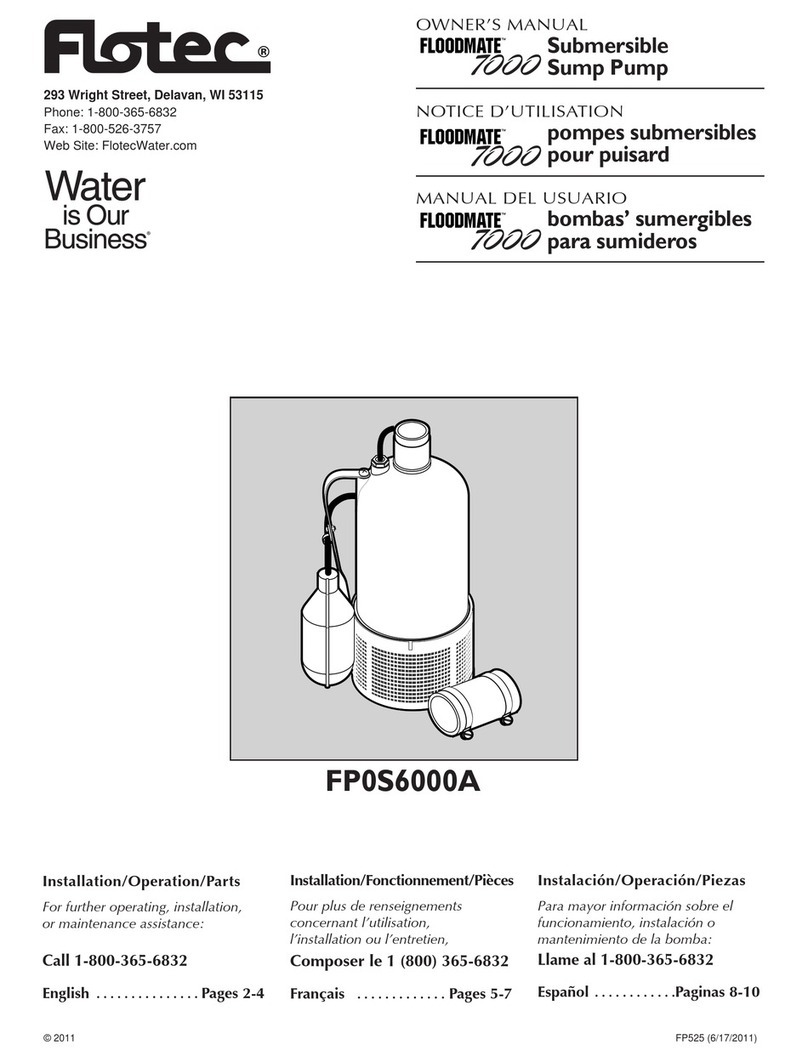Healthmark SST Pump & Hose User manual

Instructions for Use: SST Pump & Hose
Brand Name of Product
SST Pump & Hose
Generic Name of Product
SST Pump & Hose
Product Code Number(s)
IP579-4
Purpose of Product
To drain SST Trays from fluids
Range of Applications for Product
SST Trays and/or draining of any other items that require solution evacuation.
Key Specifications of Product
•Stainless Steel Pump
•Hose
Shipping & Storage
Shipping Conditions & Requirements
Storage Conditions
Packaging Contents
Shelf Life
Instructions for Using Product
Description of Use (s)
Preparation for Use
In any installations where property damage and/or personal
injury might result from an inoperative or leaking pump due to power outages,
discharge line blockage, or any other reason, a backup system(s)
should be used. In order to safely use this product, familiarize yourself
with this pump and also with the liquid (chemical, etc.) that is going to be
pumped through the unit. This pump is not suitable for many liquids.
Diagrams (drawings, pictures)
Steps for Use of Product
Installation
1. Pump should be placed as close to source of liquid and power as possible, not
more than 7' above liquid source and not more than 25' from power source.
2. Use reinforced plastic or fabric tubing or metal pipe for the suction side of
the pump. This will prevent collapse of the suction piping. Discharge piping
should never be larger than suction piping!
3. Attach suction line piping to the suction inlet and discharge line piping to
the discharge outlet.
4. Avoid using looped sections of pipe that might permit air to become entrapped.
5. Piping should be checked for any leaks at the connections. Small leaks in
suction line greatly reduce efficiency of pump and may prevent priming.
Pump should be permanently mounted; never operate a pump unless it is
secured to a solid foundation.
6. Do not operate pump dry. Impeller and mechanical seal damage will result.
7. Protect pump from extreme heat, cold. and humidity. This unit is not
waterproof and is not intended to be used in showers, saunas, or other
potentially wet locations.
8. The motor is designed to be used in a clean, dry location with access to
an adequate supply of cooling air. Ambient temperature around the motor
should not exceed 104°F (40°C). For outdoor installations, motor must be
protected by a cover that does not block airflow to and around the motor.
This unit is not weatherproof, nor is it able to be submersed in water or any
other liquid. Do not use in or near swimming pool or spa.
9. Install a foot valve and prime pump when suction lift is over 6' or when suction

line is longer than 6'.
10. It is strongly recommended that this unit be plugged into a GFCI (Ground
Fault Circuit Interrupter). Cons ult your local electrician for installation and
availability.
11. When used in a boat, pump should not be installed in the bilge.
WARNING: Disconnect battery when making adjustments and repairs.
First, remove the battery NEGATIVE (–) ground cable, then lastly the battery
POSITIVE (+) cable.
Operation
1. Pumps are self-priming and should prime themselves within 30 seconds
after pump is started. Wetting impeller with pumped fluid and keeping the
impeller coated with petroleum jelly will lengthen its life and improve priming
action. Running the impeller dry for as short as 30 seconds can ruin the
impeller. Keep suction line as short as possible.
NOTE: An easy way to prime the pump (wet impeller), if using a garden hose,
is to fill the discharge hose; elevate the discharge hose slightly to retain water
and start the pump. Another method would be to disconnect the discharge
hose from the pump, making a U-bend of the discharge hose. Fill the hose
then reconnect (without losing the water) to the pump. In both cases the water
behind the impeller will seal the pump and it will prime almost immediately.
2. Unit can be turned on and off by plugging & unplugging cord into 115V outlet.
3. Do not run at heads greater than 25' (11psig).
4. Pump equipped with a 12-Volt DC motor:
a. To operate, the motor must be connected to a 12-volt battery in good
condition, such as the type used in cars, trucks, boats, etc. Motor will
run in either direction. Therefore, connect the red wire to the POSITIVE
(+) terminal of the battery, the black wire to the NEGATIVE (–) terminal
of the battery to have the flow correspond with the arrow on the cover
plate. By reversing the wires to the battery, the pump will discharge from
the opposite port.
b. Low voltage may cause critical overheating and premature failures. To
avoid this, be sure battery voltage is maintained and observe recommended
wire size during installation. The motor is splash proof, but not
waterproof. DO NOT SUBMERGE.
CAUTION: Because unit is thermally protected, it is designed to shut off
temporarily in an overheat condition; therefore, pumping extremely hot
liquids is not recommended. Also, to protect the impeller from breakage,
do not pump liquids with a temperature less than 40°F. DO NOT TOUCH
MOTOR, IT MAY BECOME VERY HOT.
WARNING: Do not submerge pump or motor in water.
Interpretation of Results
Contraindications of Test Results
Documentation
Special Warnings and Cautions
Safety Guidelines
WARNING: Do not use to pump flammable or explosive fluids such as gasoline, fuel
oil, kerosene, etc. Do not use in flammable and/or explosive atmospheres. Pump
should only be used with liquids compatible with pump component materials. Failure
to follow this warning can result in personal injury and/or property damage.
1. Know the pump application, limitations, and potential hazards.
2. WARNING: Do not handle a pump or pump motor with wet hands or when
standing on a wet or damp surface, or in water.
3. The pump is not submersible and is intended for open-air use only.
4. Disconnect power before servicing a motor or its load. If the power disconnect
is out-of-sight, lock it in the open position and tag it to prevent unexpected
application of power.
5. Release all pressure within the system before servicing any component.
6. Drain all liquids from the system before servicing.
7. The pump motor is equipped with an automatic resetting thermal protector

and may restart unexpectedly. Protector tripping is an indication of motor
overloading as a result of operating the pump at low heads (low discharge
restriction), excessively high or low voltage, inadequate wiring, pumping
too hot a liquid, incorrect motor connections, or a defective motor or pump.
Read troubleshooting chart.
8. Do not touch an operating motor. Modern motors are designed to operate
at high temperatures.
9. Provide adequate protection and guarding around moving parts. Secure
the discharge line before starting the pump. An unsecured discharge line
will whip, possibly causing personal injury and/or property damage.
10. Check hoses for weak or worn condition before each use, making certain
that all connections are secure.
11. Periodically inspect pump and system components. Perform routine maintenance
as required (see SERVICE INSTRUCTIONS).
12. Provide a means of pressure relief for pumps whose discharge line can be
shut-off or obstructed.
13. PERSONAL SAFETY: Wear safety glasses at all times when working with pumps.
14. Do not add acid or electrolyte to a battery being used –add only water.
Consult the battery manufacturer for any additional safety instructions
Electrical Connection
1. Make certain that power source conforms to the requirements of your equipment.
2. When wiring an electrically driven pump, follow all electrical and safety
codes, as well as the most recent National Electrical Code (NEC) and the
Occupational Safety and Health Act (OSHA) in the United States.
3. Model 360 and 370 are only for use on 115 volt (single-phase) and is
equipped with an approved 3-conductor cord and 3-prong, grounding-type
plug. Model 365 is for 12VDC.
4. To reduce the risk of electric shock, models 360 & 370 should be plugged
directly into a properly installed and grounded 3-prong grounding-type receptacle.
The green (or green and yellow) conductor in the cord is the grounding
wire. The motor must be securely and adequately grounded for your protection
against shock hazards! Never connect the green (or green and yellow)
wire to a live terminal! SEE SECTIONS 10, 11 & 12 FOR MODEL 365.
5. Where a 2-prong wall receptacle is encountered, it must be replaced with
a properly grounded 3-prong receptacle installed in accordance with the
National Electrical Code and local codes and ordinances.
6. To ensure a proper ground, the grounding means must be tested by a
qualified electrician. Use only 3-wire extension cords that have 3-prong,
grounding-type plugs and receptacles that accept the equipment plug.
7. All wiring should be performed by a qualified electrician.
8. Protect electrical cord from sharp objects, hot surfaces, oil and chemicals. Avoid
kinking the cord. Replace or repair damaged or worn cords immediately.
9. When using an extension cord make sure wire is of adequate size to minimize
voltage drop at the motor. For models 360 & 370, 16 AWG is OK up to 40'.
Distance From Power Source To SST Pump Recommended Wire Size
1 - 12 Ft. #14
13 - 24 Ft . #12
25 - 36 Ft. #10
10. The SST Pump is not equipped with an inline fuse. Because of the
wide variety of applications and mounting situations, an inline fuse has not
been permanently installed. In order to provide adequate protection for the
motor, an inline fuse and fuse holder MUST be installed. The model 365
pump warranty does not cover motor damage caused by overheating. For
maximum protection, a fuse of 7 amps is suggested. Fuses and fuse holders
are readily available in most hardware, auto and home improvement stores.
11. GENERAL CONNECTION INFORMATION to a 12VDC battery.
a. Connect POSITIVE or PLUS (+) lead from the pump to battery first.
POSITIVE lead of pump is red.
b. If pump is to be connected to battery that is installed in a vehicle, connect
NEGATIVE or MINUS (–) lead to a ground away from the battery,

such as the metal of the vehicle or the negative wiring terminal strip or
other negative common point of the battery (away from the battery), if so
equipped. Always connect NEGATIVE (–) lead last. NEGATIVE (–) lead
of pump is black.
c. When DISCONNECTING —Disconnect NEGATIVE (–) lead from the
grounded location first. Then disconnect the POSITIVE (+) lead from the
battery.
12. When attaching pump leads to battery terminals, be sure that the area
(bilge of a boat, for instance) is adequately ventilated to prevent an explosion
or fire from explosive or flammable vapors that may be present.
a. Batteries emit hydrogen gas that is explosive. Avoid smoking, sparks or
open flame anywhere in the vicinity of the battery.
b. EXPLOSION from battery can cause blindness. Shield eyes when working
near any battery.
c. Batteries contain sulfuric acid. In case of contact with eyes, skin or clothing
FLUSH IMMEDIATELY WITH LARGE AMOUNTS OF WATER; GET
MEDICAL ATTENTION.
Disposal
Reprocessing Instructions
Point of Use
Preparation for Decontamination
Disassembly Instructions
Cleaning –Manual
Clean with a mild PH neutral detergent and rinse with tap water (note do not submerge the
pump) –following cleaning wipe down external surfaces of the pump with 7O% Isopropyl
alcohol
Cleaning –Automated
Disinfection
After cleaning run the pump and hose through a disinfecting solution and see the
detergent manufacturer's IFU on contact time for disinfection.
Drying
Maintenance, Inspection, and Testing
Reassembly Instructions
Packaging
Sterilization
Storage
Additional Information
SST Instrument Retrieval, SST Instrument Price List
Related Healthmark Products
Other Product Support Documents
Reference Documents
Customer Service Contact
Healthmark Industries Company, Inc
18600 Malyn Blvd.
Fraser, MI 48026
1-586-774-7600
healthmark@hmark.com
hmark.com
2021-02-05 Matt Smith
This manual suits for next models
1
Popular Water Pump manuals by other brands
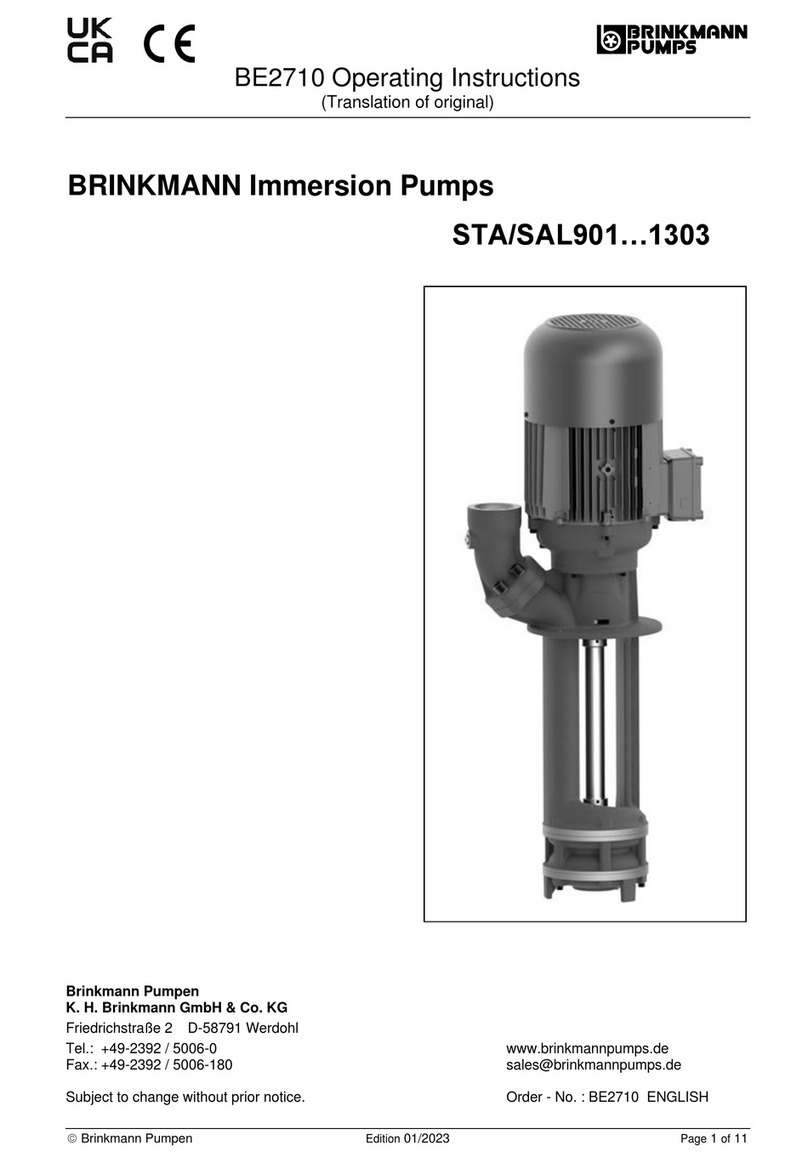
BRINKMANN PUMPS
BRINKMANN PUMPS STA901/200 operating instructions
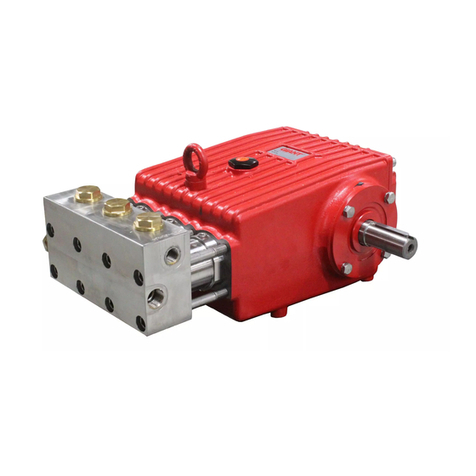
Giant
Giant GP5122 Operating instructions manual
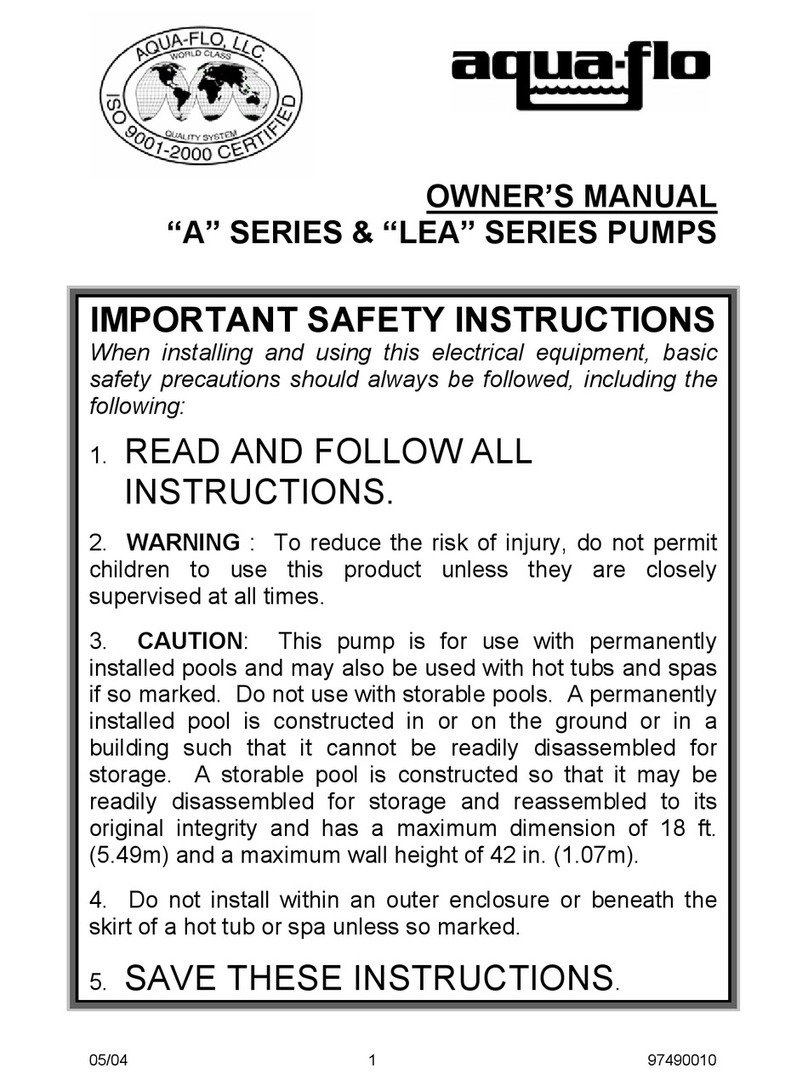
Aqua Flo
Aqua Flo "A" Series & "LEA" Series Pumps A Series owner's manual

First Choice
First Choice ECONO FLO VSA 165 owner's manual
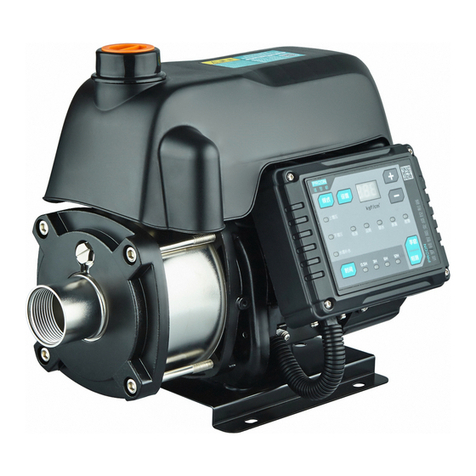
RPS
RPS TPP-750 user manual
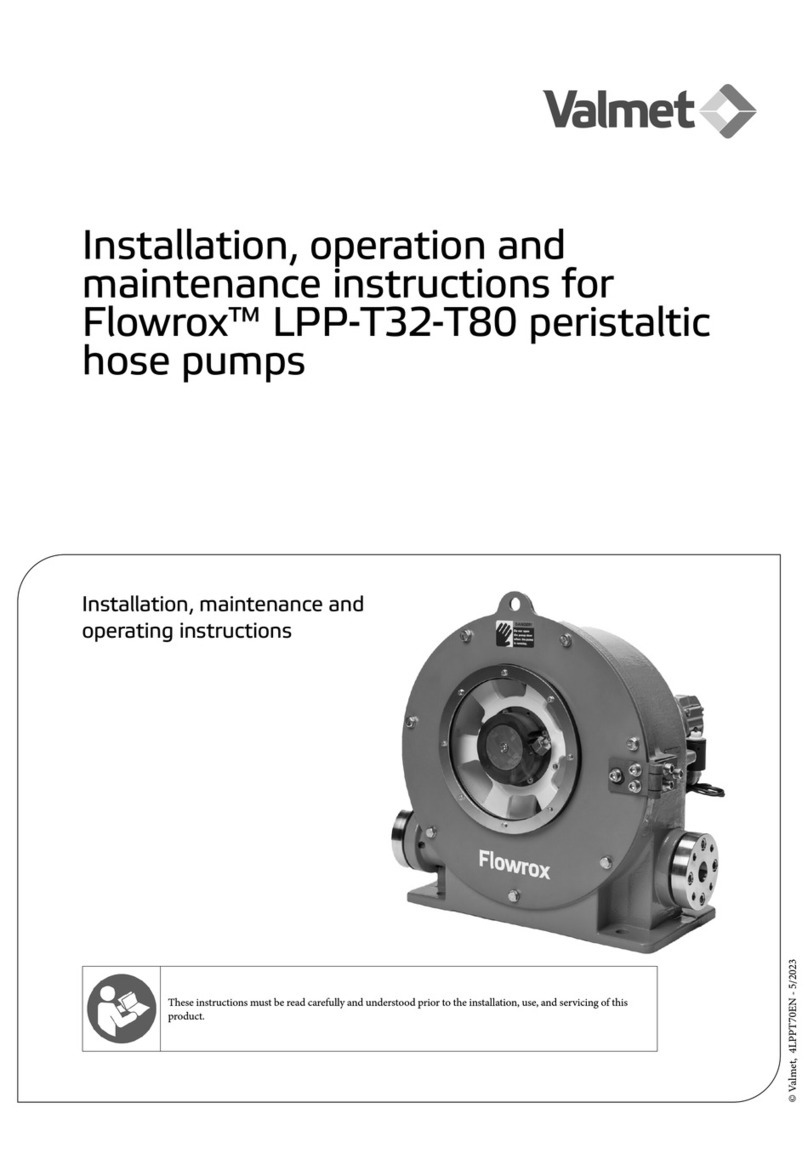
Valmet
Valmet Flowrox LPP-T32-T80 Installation, operation and maintenance instructions

BEGA
BEGA BETEX EP13 Series Assembly manual
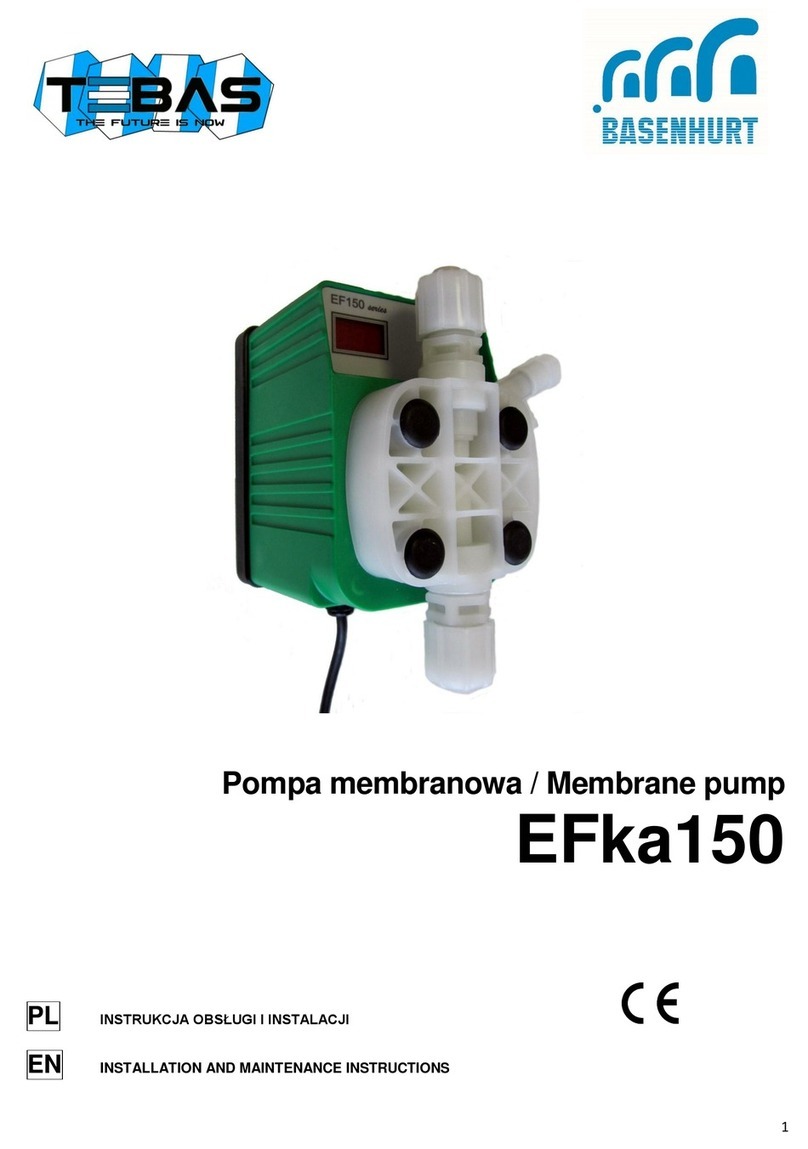
BASENHURT
BASENHURT TEBAS EFka150 Installation and maintenance instructions
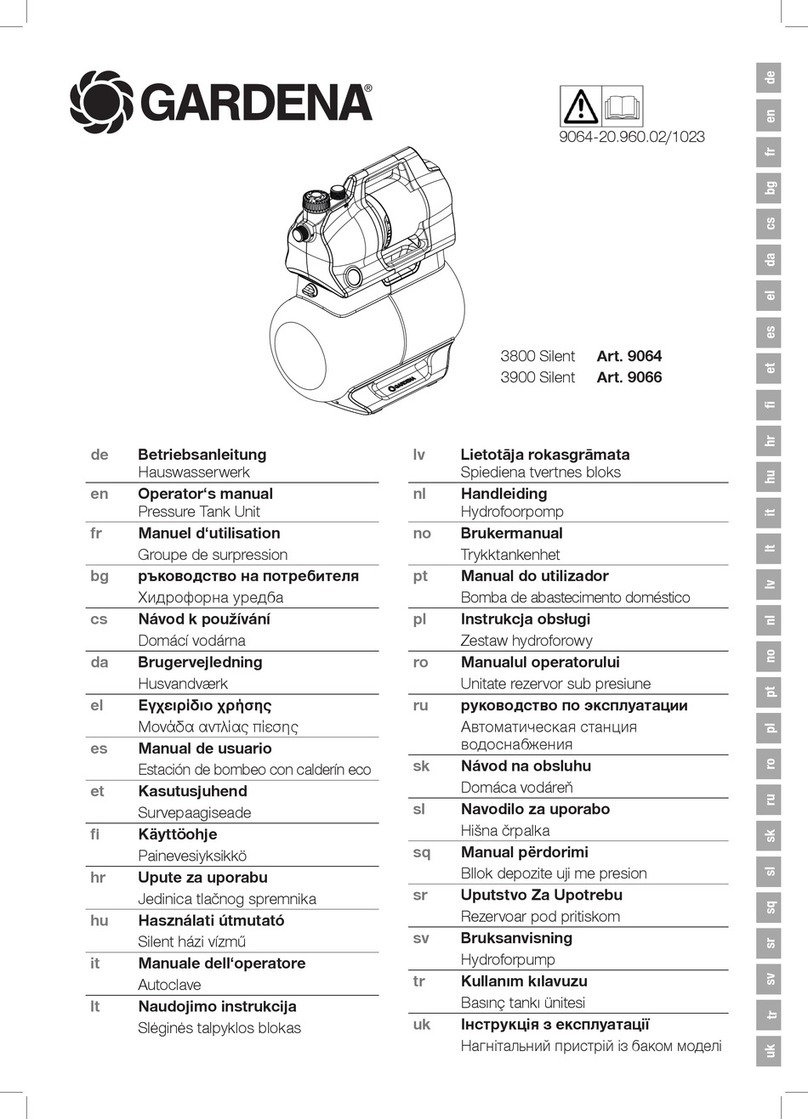
Gardena
Gardena 3800 Silent Operator's manual
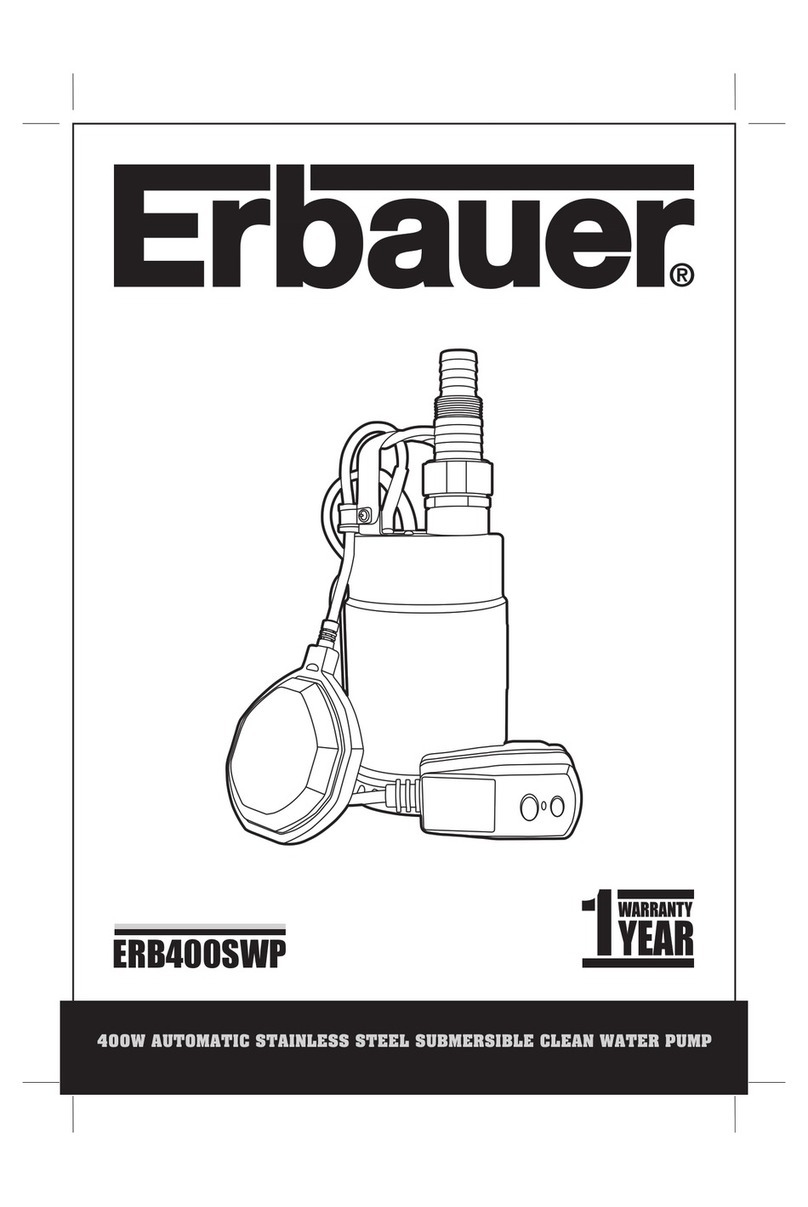
Erbauer
Erbauer ERB400SWP user manual

Field Controls
Field Controls CONDENPUMP manual

Crystal Pond Professional
Crystal Pond Professional DP250 owner's manual
